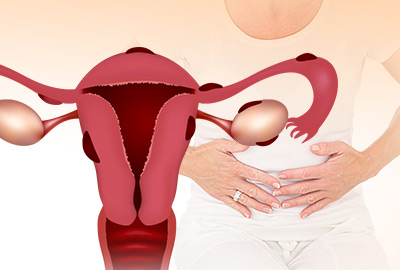
Women entering middle age are accustomed to their time of the month. For many women, their periods have remained on a fairly consistent schedule, save for pregnancies and highly stressful times. For this reason, irregular periods can be a confusing, stressful symptom.
Keep reading to learn more about irregular periods and how to identify them.
What Is an Irregular Period?
Irregular periods are an abnormal variation in length of menstrual cycles. Most menstrual cycles intervals occur about every four weeks, with a normal range between 25-31 days. However, variations in your cycle are normal, irregular periods are simply what is irregular for you. Periods are also considered irregular if they have an unusual amount of blood flow or pain associated with them.
Types of Irregular Periods
There are many ways women may experience irregularities in their cycles:
Long periods

Having cycles that last longer than 35 days or less than nine cycles per year is medically referred to as oligomenorrhea. Women may also experience periods that are longer than your norm. For example, if your typical cycle is 28 days, but you then have several consecutive cycles of 32 days, you are experiencing an irregularity.
Short periods
Likewise, a cycle may be shorter than normal. All cycles lasting less than 21 days, which usually leads to having 16 or more cycles a year, are considered irregular. The medical term for short periods is menorrhagia.
Heavy periods
This classification of irregularity greatly depends on what is normal for a woman. Typically, heavy bleeding is considered to be 60-80 mL of fluid, but this can be difficult to measure. Nonetheless, many women can tell when they are bleeding more than they have in the past, especially if they need to use more pads than before.
Light periods
Some women experience scant bleeding compared to what is regular for them. In many cases, they use fewer pads or tampons than they usually do during menstruation.
Spotting
Also called “breakthrough bleeding”, sometimes small amounts of blood appear between periods, but not enough for it to be considered a period. This could be due to ovulation or an underlying condition that may require medical attention.
Painful periods

Many women experience small cramps during menstruation or PMS, but menopausal women may feel more pain than usual. Often, this pain radiates from the pelvis to the lower back and thighs. The medical name for unusually painful periods is dysmenorrhea.
Some of these irregularities may occur together. For instance, women may start to have long cycles with light bleeding and spotting in between periods.
More Information
Irregular periods may be inevitable during menopause, but they are by no means untreatable. Understanding more about them can put you on the path to finding relief. Click on to the following link to learn more about irregular periods treatments.
Sources
- BMJ Group. "Menopause: What is it?" Patient Leaflet. 2007.
- Hutchinson, Susan M.D. "The Stages of a Woman's Life: Menstruation, Pregnancy, Nursing, Perimenopause, Menopause." November 2007.
- Love, Susan M.D. Menopause and Hormone Book. New York: Three Rivers Press, 2003.



